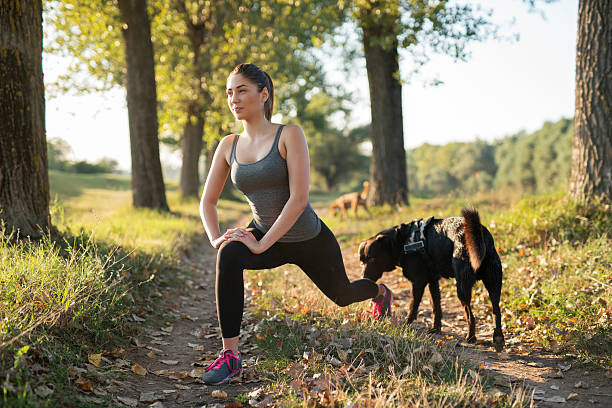If you’re considering getting a Labrador Retriever, you might be wondering, “How much do Labs shed?” “Do black Labs shed a lot?” could be a more particular query. or “How much do chocolate Labs shed?” or “How much do pet Labs shed?”
To any of the aforementioned inquiries, the quick answer is yes; all Labradors shed a lot.
Labrador retrievers were bred as waterfowl retrievers. Thus they have a double coat to protect them from cold water and the weather. This coat sheds annually, but it can sometimes shed more often, including a full-fledged “molt” of the inner coat.
We’ll discuss why chocolate Labs shed less or so much, seasonal Labrador shedding, and Labrador shedding treatments in this post.
When do chocolate labs shed the most?
While chocolate Labradors lose hair on a regular basis throughout the year. The hair loss is most noticeable during two brief times when the seasons change.
In the spring, when they shed their heavy winter coat, and again at the start of the autumn, when they shed their summer coat and prepare to ‘bulk up’ for the winter, your Lab will shed a lot of hair.
These week known among lab owners as “shedding season,” and you may anticipate using your vacuum cleaner a lot more during this time!
How bad do chocolate labs shed?
The Labrador Retriever is a breed that sheds a lot. Working breeds are often the heaviest shedders. Those from colder climates, as well as those who live or work in rainy or otherwise difficult situations. What about the shedding of yellow Labs? Is your black lab shedding hair? Do you have a shedding Chocolate Lab?
Is there a difference in how much a Lab sheds depending on his color?
Labradors shed a lot, no matter what color they are.
That doesn’t rule out the possibility of noticing minor changes in shedding volumes across people.
Some Labs shed somewhat more or less than others, but we haven’t found any evidence of a link between coat color and shedding differences.
How Much Do chocolate Labradors shed?
The issue of “why do chocolate Labs shed so much?” has been answered. However, you may still be wondering how much and when Labs shed. The explanation is that depending on the time of year, Lab’s coat sheds in different phases when she exposed to the elements. During the yearly “molt” in the spring, the inner coat sheds completely. Longer days promote this large shed, indicating that warmer weather is on the approach and that a heavy coat will be unnecessary for a time. The amount of hair that is lost might be astonishing!
When you see it, you’ll understand why this sort of molting is also known as “blowing their coat.”
How Does Shedding The Out Coat Compare to Shedding The In Coat?
The outer coat sheds on a seasonal basis. When the outer coat sheds, you may notice significantly less hair fall because it isn’t as thick as the inner coat.
If both the inner and outer coats are shedding at the same time, you may observe an excessive amount of hair and maybe spikes emerging from your dog. This may be obvious, particularly if it’s time to put away the summer coat in preparation for the arrival of the winter coat.
Due to the fact that many Labs kept as house pets, this shedding equation may not apply to all.
Is it true that certain chocolate labs shed more than others?
It’s nearly hard to predict how much hair your choco Lab will lose, and it will, of course, differ from one dog to the next.
There are several stories that yellow Labs shed more than chocolate and black Labs, but there is no strong evidence to support this. It’s more probable that yellow Labs’ lighter hair just shows up better on your furniture, carpets, and clothes.
You’ll probably want to buy lint rollers in bulk if you decide a lab is a dog for you. Basically, regardless of the Lab variation you possess, you can expect to shed some hair.
The female heat cycle (you should expect unspayed female Labs to shed a lot while they’re in heat) and dogs living in hotter regions (they require less hair to remain warm than their counterparts living in colder climates) two variables that considered to contribute to greater shedding.
Why Do Chocolate Labs Shed So Much?
Despite the fact that shedding is required by Mother Nature in Labs that live or work outside. Some Labs may appear to shed on a daily basis rather than in numerous rounds throughout the year. This is because being in a climate-controlled environment prevents climate patterns from changing. Which required mass shedding to occur in the fall and spring.
Just keep in mind that you should expect a lot of Lab hair at any moment.
Could Excessive Shedding Be Harmful to Chocolate Lab Health?
Although a shedding choco Lab is perfectly natural, if you suspect your dog’s hair loss is becoming severe, you should visit your veterinarian since it might suggest underlying health issues.
Excessive hair loss is believed to be caused by allergies, stress, and hormone abnormalities.
If no health issues are discovered but you’re still concerned about your choco Lab’s shedding, you might want to consider changing his diet.
The healthier your dog is on the inside, the more it will show on the exterior, just like people.
If you feed your Lab good and balanced food, you’ll notice a difference in the quality of their coat.
How to Prevent a choco Lab from shedding?
Unfortunately, there is no way to stop Mother Nature from doing what she wants. No matter what you do, a Labrador will shed a lot, whether daily or periodically. The only option is to keep track of how much fur is on your dog and in your house on a daily basis.
Taking Care of Labrador Shedding
There are a few things you can do to reduce Labrador shedding and the amount of fur on your dog and in your home.
Brushing your Labrador daily or weekly might help to reduce seasonal shedding.
During molting season, brush her more frequently.
Baths can also help release shed fur on occasion.
Brushing
Brushing your dog removes dead hair while also stimulating healthy skin.
Brushes and grooming products are useful for various phases of shedding and how you want your dog’s coat to appear and feel.
Grooming and Bathing
Chocolate Labradors have a short, non-tangle coat that repels water and most unpleasant substances. This does not, however, negate the need for comprehensive grooming for your Lab. Brushing your dog’s coat may help remove dead skin cells and hair, fluff it, and make it incredibly smooth and lustrous.
Even though your Labrador is magically clean most of the time, giving her a wash now and again will help her from becoming stinky. Especially if your dog enjoys rolling in mud, water, and other potentially harmful substances.
Getting Rid of Hair
Keeping the quantity of loose pet hair on the floor to a minimum will reduce the amount that ends up elsewhere. It’s tempting to believe that merely cleaning your home with a standard sweeper would suffice to keep dog hair at bay. However, anybody who has ever owned a high-shedding dog will tell you that this is far from enough. It may be required to vacuum your floors on a daily basis during peak shedding season.
Final verdict
With a double coat in chocolate labradors, there is an extra element of fur to shed. The inner coat of the double coat is also extremely thick, even more so than in other dog breeds.
Because of this density and the sheer volume of fur, Labradors shed far more than breeds with single hair coats.
Brush your Lab daily during the shed period and occasionally otherwise, offer them an infrequent bath, and eliminate dog hair from your house using pet-specific cleaning appliances to control the quantity of shedding that happens at any one time.
In this article you have got the answers of whether or not chocolate labs shed less or so much, how bad do chocolate labs shed, when do chocolate labs shed the most and all other basics. Hopefully, this article will solve all of your problems regarding your chocolate lab shedding.







